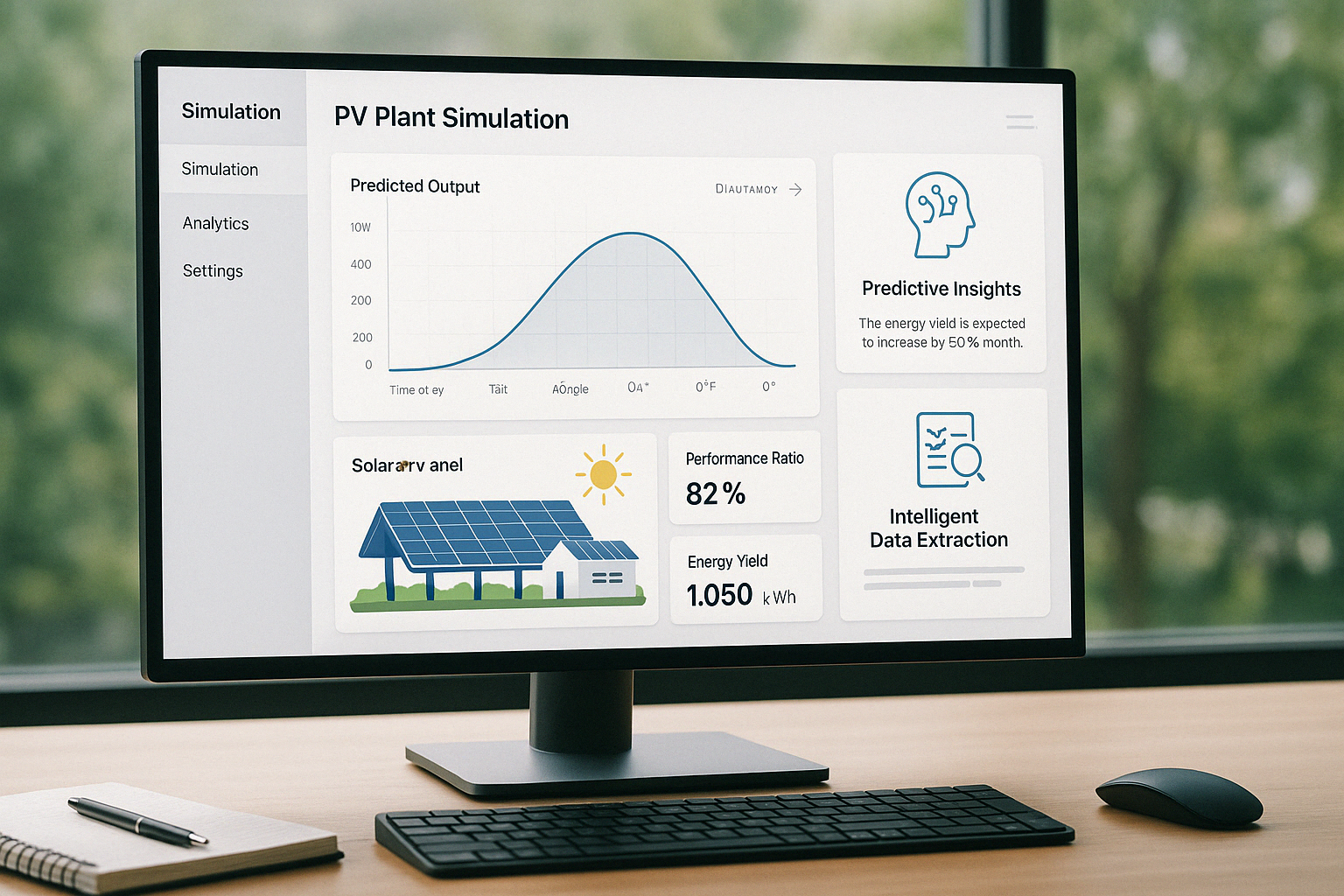How We Unified Disconnected Legacy Systems into a Single Pane of Glass for a PV Company

How We Unified Disconnected Legacy Systems into a Single Pane of Glass for a PV Company
The Challenge
Our client, a company specializing in photovoltaic (PV) simulation and analysis, was managing a set of outdated, disconnected systems built over time. Their core platform had evolved into a fragmented ecosystem of dashboards, tools, and workflows that created more friction than functionality.
Running a single PV simulation required users to jump across interfaces, retrieve data from multiple sources, and interpret outputs manually. This setup caused:
- User frustration: Navigating between different tools slowed down daily tasks and caused confusion.
- Performance issues: Simulations and data visualizations were slow, unreliable, and often failed under load.
- Limited visibility: Teams lacked a unified view of current simulations, KPIs, or system health.
- Scalability constraints: The existing architecture struggled to support growing datasets and a wider user base.
- Stagnated innovation: Integrating modern features like AI-driven analytics was nearly impossible within the legacy structure.
The Solution
We helped the client completely modernize their system by building a unified, AI-ready platform that consolidated all fragmented functionality into a streamlined, user-friendly interface - what we call a “single pane of glass.”
Discovery & Workflow Mapping
We started by mapping user roles, actions, and friction points across the legacy tools. Through workshops and stakeholder interviews, we identified:
- Redundant data entry across tools
- Inconsistent simulation flows
- A lack of clarity in reporting and tracking results
- Features hidden behind technical debt
This foundation allowed us to redesign not just the interface, but the experience.
A Unified, Modern Dashboard
We created a central dashboard that now acts as the operational hub for all PV simulation activities:
- Simulation Control Center: A streamlined flow to launch, configure, and monitor simulations from one place.
- Real-Time Status Tracking: Visual progress indicators, logs, and completion alerts make it easy to follow ongoing jobs.
- Insights & Reports: Interactive charts and ROI projections help users make data-informed decisions instantly.
- Configuration Management: All settings, templates, and permissions are accessible without leaving the dashboard.
Backend Overhaul for Scalability
To power this unified experience, we modernized the backend infrastructure:
- Migrated core services to a modular API-based system.
- Implemented asynchronous job queues to handle heavy simulation loads efficiently.
- Added caching and database optimization for faster data retrieval.
- Laid a cloud-native foundation for future horizontal scaling.
Built-in AI Readiness
We also introduced a backend structure to support upcoming AI-powered enhancements:
- Predictive Analytics Prototypes: Early-stage models to forecast PV performance based on historical data and location metadata.
- Intelligent Data Extraction: Tools that parse unstructured input and convert it into simulation-ready parameters.
- Modular Design for AI Add-ons: The system is now prepared to accept ML endpoints without needing another structural overhaul.
UX & UI Overhaul
We placed strong emphasis on usability and clarity:
- Redesigned every screen with a modern design system focused on accessibility and efficiency.
- Reduced cognitive load by grouping related actions and eliminating redundant steps.
- Made the platform mobile-friendly and performance-optimized across devices.
The Results
The modernization effort delivered transformative outcomes:
- True Single Pane of Glass: Users no longer jump between systems. Everything from configuration to analytics lives in one dashboard.
- Boosted Efficiency: Simulations run faster, and user workflows are smoother, reducing time spent per job by over 50%.
- Improved Collaboration: With real-time status and unified reports, teams collaborate more easily across departments.
- Future-Proof Architecture: The new system is ready for cloud scaling, API integrations, and AI feature deployment.
The Future
We’re now supporting the client as they prepare to roll out fully AI-driven features. Next steps include:
- Predictive yield modeling and financial forecasting.
- Dynamic suggestion systems for simulation optimization.
- External partner APIs for integrating the platform into broader solar design ecosystems.
Conclusion
By consolidating fragmented tools into a single, cohesive interface, we helped this PV company modernize its operations and unlock new levels of performance and insight.
If you’re struggling with legacy systems or managing multiple disconnected platforms, reach out to us to explore how we can help you build your own single pane of glass.